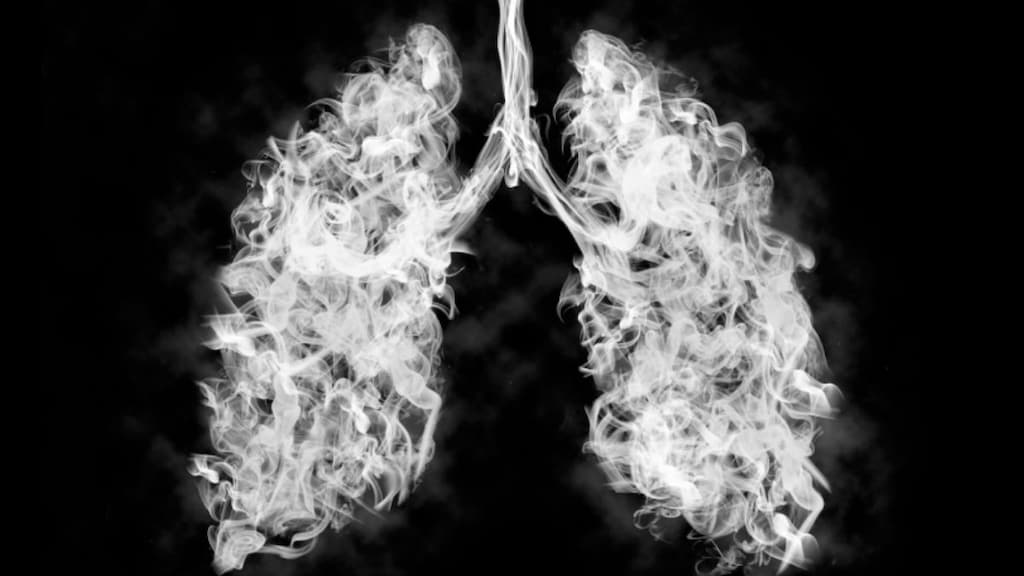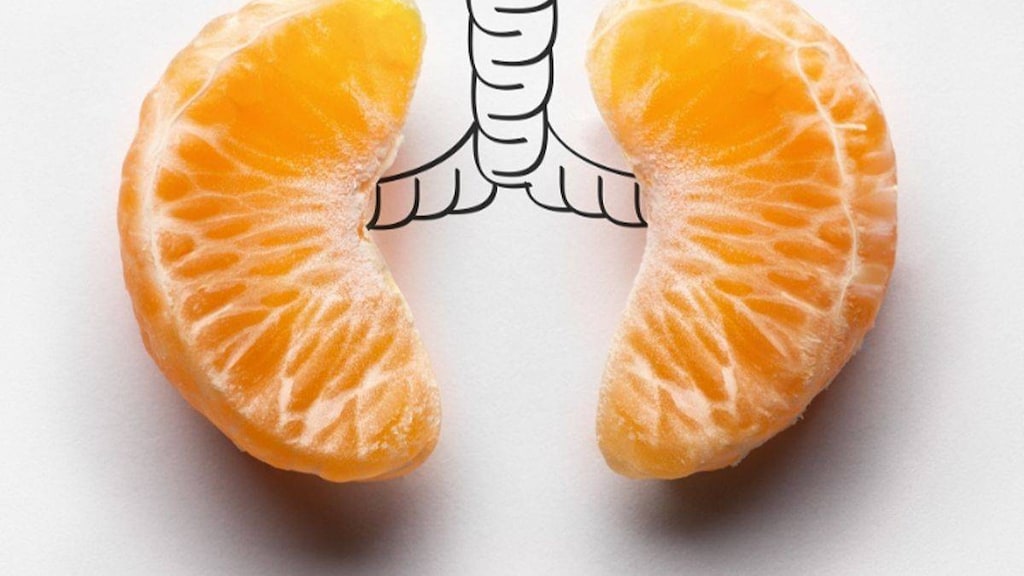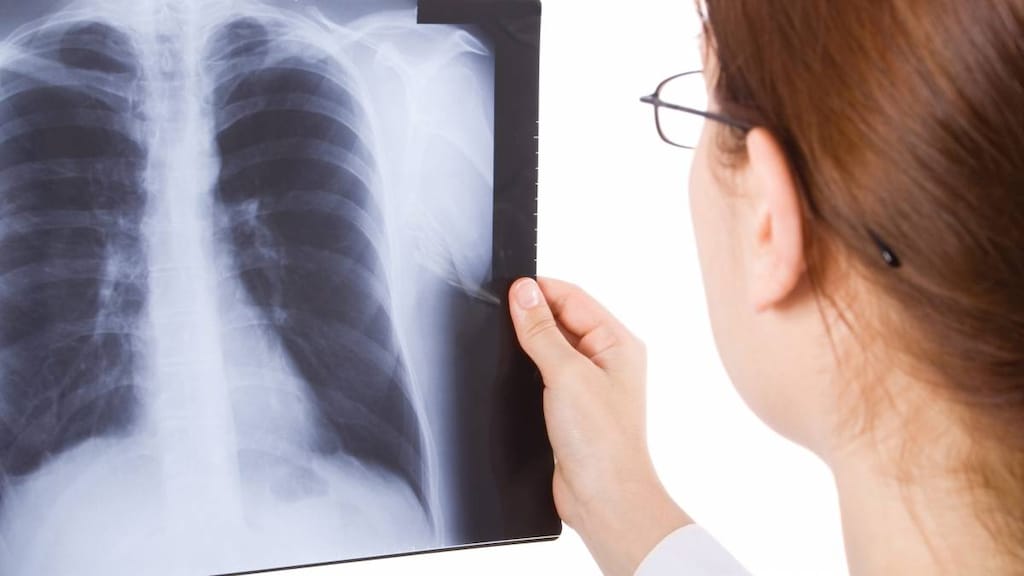Dosage Forms
Excipient information presented when available (limited, particularly for generics); consult specific product labeling.
Aerosol Powder Breath Activated, Inhalation, as bromide:
Tudorza Pressair: 400 mcg/actuation (1 ea) [contains lactose monohydrate]
Pharmacology
Mechanism of Action
Competitively and reversibly inhibits the action of acetylcholine at type 3 muscarinic (M3) receptors in bronchial smooth muscle causing bronchodilation
Pharmacokinetics/Pharmacodynamics
Distribution
Vd: ~300 L (following IV administration)
Metabolism
Rapid and extensive hydrolysis via plasma esterases to inactive alcohol and acid metabolites
Excretion
Urine (<1% each of an inhaled dose)
Time to Peak
Plasma: Within 10 minutes (steady state, following inhalation)
Half-Life Elimination
5 to 8 hours (following inhalation)
Use: Labeled Indications
Chronic obstructive pulmonary disease: Maintenance treatment of patients with chronic obstructive pulmonary disease (COPD).
Contraindications
Hypersensitivity to aclidinium or any component of the formulation; severe hypersensitivity to milk proteins
Dosage and Administration
Dosing: Adult
COPD: Oral inhalation: Dry powder inhaler: 400 mcg (one inhalation) twice daily
Dosing: Geriatric
Refer to adult dosing.
Administration
Oral inhalation: Dry powder inhaler: Administer via oral inhalation in the morning and evening ~12 hours apart; inhaler device is breath actuated. Remove inhaler from sealed pouch immediately prior to first use. Prior to each use, remove protective cap from the inhaler and prepare inhaler by pressing and releasing the green button to lead the dose; make sure the control window has changed from red to green (indicates inhaler ready for use). If the control window is red, retry activating the inhaler again by pressing and releasing the green button. Prior to inhaling the dose, breathe out completely before forming a tight seal with lips around mouthpiece and breathe in; there will be a “clicking” sound to ensure that the full dose has been given, although some patients may not hear the “click.” Use the control window, which should turn red after inhalation, to make sure the dose was inhaled correctly. If the control window is still green, repeat inhalation steps.
Storage
Store at 25°C (77°F); excursions permitted between 15°C to 30°C (59°F to 86°F). Product should be stored inside sealed pouch and only removed immediately before use. Discard product 45 days after opening pouch, when device locks out, or when dose indicator displays “0”, whichever comes first.
Drug Interactions
Acetylcholinesterase Inhibitors: May diminish the therapeutic effect of Anticholinergic Agents. Anticholinergic Agents may diminish the therapeutic effect of Acetylcholinesterase Inhibitors. Monitor therapy
Amantadine: May enhance the anticholinergic effect of Anticholinergic Agents. Monitor therapy
Anticholinergic Agents: Aclidinium may enhance the anticholinergic effect of Anticholinergic Agents. Avoid combination
Botulinum Toxin-Containing Products: May enhance the anticholinergic effect of Anticholinergic Agents. Monitor therapy
Cannabinoid-Containing Products: Anticholinergic Agents may enhance the tachycardic effect of Cannabinoid-Containing Products. Exceptions: Cannabidiol. Monitor therapy
Chloral Betaine: May enhance the adverse/toxic effect of Anticholinergic Agents. Monitor therapy
Cimetropium: Anticholinergic Agents may enhance the anticholinergic effect of Cimetropium. Avoid combination
Eluxadoline: Anticholinergic Agents may enhance the constipating effect of Eluxadoline. Avoid combination
Gastrointestinal Agents (Prokinetic): Anticholinergic Agents may diminish the therapeutic effect of Gastrointestinal Agents (Prokinetic). Monitor therapy
Glucagon: Anticholinergic Agents may enhance the adverse/toxic effect of Glucagon. Specifically, the risk of gastrointestinal adverse effects may be increased. Monitor therapy
Glycopyrrolate (Oral Inhalation): Anticholinergic Agents may enhance the anticholinergic effect of Glycopyrrolate (Oral Inhalation). Avoid combination
Glycopyrronium (Topical): May enhance the anticholinergic effect of Anticholinergic Agents. Avoid combination
Ipratropium (Oral Inhalation): May enhance the anticholinergic effect of Anticholinergic Agents. Avoid combination
Itopride: Anticholinergic Agents may diminish the therapeutic effect of Itopride. Monitor therapy
Levosulpiride: Anticholinergic Agents may diminish the therapeutic effect of Levosulpiride. Avoid combination
Loxapine: Agents to Treat Airway Disease may enhance the adverse/toxic effect of Loxapine. More specifically, the use of Agents to Treat Airway Disease is likely a marker of patients who are likely at a greater risk for experiencing significant bronchospasm from use of inhaled loxapine. Management: This is specific to the Adasuve brand of loxapine, which is an inhaled formulation. This does not apply to non-inhaled formulations of loxapine. Avoid combination
Methacholine: Long-acting muscarinic antagonists (LAMAs) may diminish the therapeutic effect of Methacholine. Consider therapy modification
Mianserin: May enhance the anticholinergic effect of Anticholinergic Agents. Monitor therapy
Mirabegron: Anticholinergic Agents may enhance the adverse/toxic effect of Mirabegron. Monitor therapy
Nitroglycerin: Anticholinergic Agents may decrease the absorption of Nitroglycerin. Specifically, anticholinergic agents may decrease the dissolution of sublingual nitroglycerin tablets, possibly impairing or slowing nitroglycerin absorption. Monitor therapy
Opioid Agonists: Anticholinergic Agents may enhance the adverse/toxic effect of Opioid Agonists. Specifically, the risk for constipation and urinary retention may be increased with this combination. Monitor therapy
Oxatomide: May enhance the anticholinergic effect of Anticholinergic Agents. Avoid combination
Potassium Chloride: Anticholinergic Agents may enhance the ulcerogenic effect of Potassium Chloride. Management: Patients on drugs with substantial anticholinergic effects should avoid using any solid oral dosage form of potassium chloride. Avoid combination
Potassium Citrate: Anticholinergic Agents may enhance the ulcerogenic effect of Potassium Citrate. Avoid combination
Pramlintide: May enhance the anticholinergic effect of Anticholinergic Agents. These effects are specific to the GI tract. Consider therapy modification
Ramosetron: Anticholinergic Agents may enhance the constipating effect of Ramosetron. Monitor therapy
Revefenacin: Anticholinergic Agents may enhance the anticholinergic effect of Revefenacin. Avoid combination
Secretin: Anticholinergic Agents may diminish the therapeutic effect of Secretin. Management: Avoid concomitant use of anticholinergic agents and secretin. Discontinue anticholinergic agents at least 5 half-lives prior to administration of secretin. Consider therapy modification
Thiazide and Thiazide-Like Diuretics: Anticholinergic Agents may increase the serum concentration of Thiazide and Thiazide-Like Diuretics. Monitor therapy
Tiotropium: Anticholinergic Agents may enhance the anticholinergic effect of Tiotropium. Avoid combination
Topiramate: Anticholinergic Agents may enhance the adverse/toxic effect of Topiramate. Monitor therapy
Umeclidinium: May enhance the anticholinergic effect of Anticholinergic Agents. Avoid combination
Adverse Reactions
1% to 10%:
Central nervous system: Headache (7%), falling (1%)
Gastrointestinal: Diarrhea (3%), toothache (1%), vomiting (1%)
Respiratory: Nasopharyngitis (6%), cough (3%), rhinitis (2%), sinusitis (2%)
<1%, postmarketing, and/or case reports: Anaphylaxis, angioedema, blurred vision, bronchospasm, cardiac failure, diabetes mellitus, first-degree atrioventricular block, nausea, osteoarthritis, pruritus, skin rash, stomatitis, tachycardia, type 1 hypersensitivity reaction, urinary retention, urticaria, voice disorder, xerostomia
Warnings/Precautions
Concerns related to adverse effects:
- Bronchospasm: Paradoxical bronchospasm that may be life-threatening may occur with use of inhaled agents; this should be distinguished from inadequate response. If paradoxical bronchospasm occurs, discontinue use and institute alternative therapy.
- Hypersensitivity reactions: Immediate hypersensitivity reactions, including anaphylaxis, angioedema, pruritus, rash, and urticaria, may occur; discontinue immediately if signs/symptoms of a hypersensitivity reaction occur.
Disease-related concerns:
- Glaucoma: Use with caution in patients with narrow angle glaucoma; may increase intraocular pressure.
- Urinary retention: Use with caution in patients with urinary retention. Monitor for signs and symptoms of urinary retention, especially in patients with prostatic hyperplasia or bladder-neck obstruction.
Concurrent drug therapy issues:
- Drug-drug interactions: Potentially significant interactions may exist, requiring dose or frequency adjustment, additional monitoring, and/or selection of alternative therapy. Consult drug interactions database for more detailed information.
Dosage form specific issues:
- Lactose: Powder for oral inhalation may contain lactose; use is contraindicated in patients with severe milk protein allergy.
Other warnings/precautions:
- Appropriate use: Not indicated for the initial (rescue) treatment of acute episodes of bronchospasm.
Monitoring Parameters
FEV1, peak flow, and/or other pulmonary function tests; signs/symptoms of glaucoma; hypersensitivity reactions; urinary retention
Pregnancy
Pregnancy Considerations
Adverse events have been observed in animal reproduction studies.
Patient Education
What is this drug used for?
- It is used to treat COPD (chronic obstructive pulmonary disease).
- This drug is not to be used to treat intense flare-ups of shortness of breath. Use a rescue inhaler. Talk with the doctor.
Frequently reported side effects of this drug
- Headache
- Sore throat
- Stuffy nose
Other side effects of this drug: Talk with your doctor right away if you have any of these signs of:
- Vision changes
- Blurred vision
- Eye pain
- Severe eye irritation
- Seeing halos or bright colors around lights
- Unable to pass urine
- Painful urination
- Passing a lot of urine
- Breathing problems like shortness of breath, wheezing, coughing, or breathing gets worse.
- Signs of a significant reaction like wheezing; chest tightness; fever; itching; bad cough; blue skin color; seizures; or swelling of face, lips, tongue, or throat.
Note: This is not a comprehensive list of all side effects. Talk to your doctor if you have questions.
Consumer Information Use and Disclaimer: This information should not be used to decide whether or not to take this medicine or any other medicine. Only the healthcare provider has the knowledge and training to decide which medicines are right for a specific patient. This information does not endorse any medicine as safe, effective, or approved for treating any patient or health condition. This is only a brief summary of general information about this medicine. It does NOT include all information about the possible uses, directions, warnings, precautions, interactions, adverse effects, or risks that may apply to this medicine. This information is not specific medical advice and does not replace information you receive from the healthcare provider. You must talk with the healthcare provider for complete information about the risks and benefits of using this medicine.




